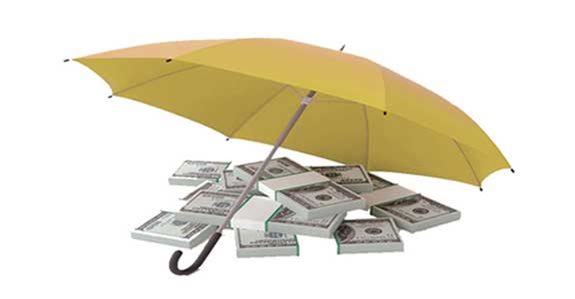With overdraft protection, a tenant with a balance of $550 can withdraw $700 without fear of insufficient funds. This service is offered at a cost by the banks because the transaction requires additional processing. However, your bank provides such a service to ensure that your transactions are covered if you have insufficient funds in your checking account. In this article, we’ll further discuss Wells Fargo Overdraft Protection, Bank of America overdraft protection, Chase checking account, and how it works.
What is Overdraft Protection?
Overdraft protection is a program by your bank that ensures that your transactions are covered if you don’t have enough money in your Chase checking account. The bank will transfer money from another linked account to the overdrawn account automatically. Although the bank may charge you for this service, it is normally much less expensive than paying an overdraft fee. Bank policy regarding overdraft protection, including whether or not a fee is levied, differs. To determine if overdraft protection is good for you, ask your financial institution to explain the specifics.
Understanding Overdraft Protection
Overdraft protection might help you save money on overdraft fees. When you overdraw with this service, you will still be charged a price, but it will be less than the bank’s usual overdraft fee: $12.50 instead of $35. Furthermore, overdraft protection ensures that the individual you’re paying gets their money as soon as possible.
With Wells Fargo’s overdraft protection service, you can link up to two eligible accounts to your checking account(s), such as a savings and a credit account. The bank will use funds from your linked accounts to cover any transactions that your checking account balance cannot support.
No matter how many transactions must be covered, the bank will charge only one overdraft security transfer or advance fee each day. A fee of $12.50 will be charged for cash moved from a savings account or a home equity line of credit. The cost of a credit card advance varies. Interest begins to accumulate from the date the advance is made, depending on the amount of the advance.
How Overdraft Protection Works
Overdraft protection used to be automatically added to all checking accounts by consumer banks, but now you must request it or explicitly accept it. Overdraft protection is used when there is insufficient money in your account. Alternatively, you may have sufficient funds in your account, but they are on hold and not yet accessible for use.
Your account is overdrawn when the bank allows a debit purchase that exceeds your account balance. Usually, there are two outcomes. First, if sufficient money is available in an associated account, the bank will automatically transfer funds between your accounts. Second, the bank may decide to pay for the transaction on your behalf, putting you and the bank into a contractual relationship. In all cases, the bank may choose to charge an overdraft fee because the transaction requires additional processing.
Overdraft Protection Chase
Overdraft rates with Chase are $34, with a daily limit of three overdraft charges. If the purchase or overdraft is $5 or less, Chase may waive these fees. Overdraft fees are inconvenient, and the costs make it difficult to save money while also putting your account at risk. Depending on your account, Chase may waive overdraft fees.
Overdraft protection protects you from exceeding your available funds by moving money from your Chase savings account. This covers all transactions, allowing you to be more flexible with your spending. However, overdraft safety contributes to your monthly savings withdrawal limit of six per statement period. There is a $5 withdrawal fee after the first six withdrawals. If you make more than six withdrawals, Chase may immediately suspend your account for overdraft protection. You could change your Chase savings account to a checking account, but you’d lose your overdraft protection as well as any potential interest gained on your savings.
Wells Fargo Overdraft Protection
There are several reasons why Wells Fargo is the most accessible bank in the country. They’ve recently taken steps to boost fee transparency and give customers more incentives. Their business banking choices are adaptable to the needs of any company, and they can grow with you. They offer three regular business checking options as well as analyzed business checking for firms with more complex suitability requirements.
Wells Fargo, like most banks, charges customers overdraft fees to cover overdraft protection or items that exceed their account balance. Overdraft costs at Wells Fargo range from $12.50 to $35. When you spend more money than you have in your checking account with Wells Fargo, there are consequences. The transaction type and associated accounts mostly affect the costs you pay.
How Wells Fargo Treats Overdrafts
The following are the manner in which Wells Fargo handles overdrafts:
#1. For Everyday Transactions
Wells Fargo won’t cover ATM or routine debit transactions that exceed the balance in your account. Rather than charging a fee, it declines.
#2. For Checks and Regular Bills:
When it comes to checks and periodic bill payments, the institution, like many others, utilizes its discretion. You’ll be levied an overdraft fee if these payments go through without adequate money in your account.
Overdraft Fees at Wells Fargo
Wells Fargo offers two overdraft protection services: Overdraft security and debit card overdraft services. On the other hand, it can restart at any time or end at any time. When a consumer activates both services and an overdraft occurs, Wells Fargo will employ overdraft protection first because it offers the cheaper fee of the two services.
You can link up to two eligible accounts to your checking account with Wells Fargo’s overdraft protection service, such as Chase savings and a credit account. The bank will use funds from your linked accounts to cover any transactions that your checking account balance cannot support.
Wells Fargo charges one overdraft protection transfer or advance per day, for all transactions, no matter how large or small. A cash withdrawal from a savings account or a line of credit will incur a $12.50 fee. Because of the effect of the variable cost on the cash advances made via credit cards, the rate of interest on such advances increases daily.
You can choose to have the bank accept Wells Fargo debit card and ATM transactions if you don’t have enough cash in your checking or savings accounts to qualify for overdraft protection when a transaction occurs using the debit card overdraft service. Most of the time, a $35 overdraft charges per item.
Techniques to Reduce Overdraft Fees:
The following are two strategies to cut down on your overdraft fees:
- To use before the overdraft feature comes into play, link your checking account to another source of funds (such as savings or a credit card).
- Inquire about an overdraft line of credit and see if it is a less expensive choice.
Examples of Overdraft Protection
- A new Federal Reserve rule goes into effect on August 15, 2017, prohibiting banks from charging overdraft security fees unless a client has requested it. It’s possible that you’ve decided to sign up for overdraft protection because:
- You don’t want to be sorry if your debit card is denied.
- You believe it will come in handy in an emergency, such as when you run out of gas.
- You regard it as a high-interest, short-term loan.
Overdraft Protection by Bank of America
Bank of America today announced major improvements to its overdraft services, including the elimination of non-sufficient funds (NSF) fees in February and the reduction of overdraft costs from $35 to $10 in May. In May, the business will stop charging a transfer fee for its Balance Connect overdraft protection service. Overdraft charge revenues will be reduced by 97 percent from 2009 levels, thanks to these and other improvements over the last decade, as well as industry-leading products that can assist consumer clients to avoid overdraft fees, such as the no overdraft cost SafeBalance® account Balance Assist.
“We’ve made significant changes to our overdraft services and solutions over the last decade, reducing clients’ reliance on overdrafts and providing resources to help clients manage their deposit accounts and overall finances responsibly,” said Holly O’Neill, Bank of America’s President of Retail Banking. “We consulted our National Community Advisory Council (NCAC) throughout the process for advice and feedback on our proposed improvements.” These next actions will provide even more help and empowerment to our clients as they work to achieve long-term financial wellness.
How Can I Prevent Overdraft Charges?
The simplest approach to avoiding overdraft penalties is to keep your account balance positive at all times. Check your account balance on a regular basis, and if you pay certain bills by autopay (such as your credit card), make sure you have enough to cover the amount before the payment each month.
You might also try enrolling in your bank account’s overdraft protection, but be sure there are no fees related in any way. If your bank or credit union charges a fee for moving funds from a linked bank account, consider switching to a no-cost account.
The Advantages of Overdraft Protection
Overdraft protection has the following advantages:
- Even if you don’t have enough money in your bank account, your transaction will still clear, which helps to expedite transactions when you’re in a hurry, such as at a gas station or drive-thru. It may also spare you from embarrassment.
- It is frequently much less expensive than incurring an overdraft fee.
- It may allow checks to clear, allowing you to avoid merchant returned check costs.
- In an emergency, it can provide access to finances.
- The check will clear, whether it’s an emergency payment or a simple error.
- A business partner may not know that your personal bank account funds are low, or a landlord may be unaware of a tenant’s financial status.
- It is possible to prevent incurring overdraft fees.
- This service is frequently less expensive than incurring an overdraft fee.
- In an emergency, you have access to finances, even if your bank account does not have enough funds to cover a transaction.
The Disadvantages of Overdraft Protection
Overdraft protection has several drawbacks as well:
- You must pay whatever fee your bank imposes.
- There is no guarantee that overdraft fees will be out completely. Many banks charge a fee for each overdraft protection transfer, which can result in multiple fines on the same day.
- insufficient savings account funds may refuse transactions.
- It may encourage expenditures for those who are unaware of the significant expenditures.
- Even if you do not overdraw your account, you must pay fees.
- Some banks limit coverage or charge a fee. Before consenting to overdraft protection, be sure you understand Bank of America coverage.
- Your transaction may fail if linked accounts are insufficient.
- Simply having overdraft protection does not mean it is a good idea. You must still manage your bank account, whether it is with Bank of America or not, budget your expenses, and understand your financial restrictions before applying for overdraft protection.
- Bank of America may terminate membership status if the overdraft protection program is excessive, especially if your bank account remains negative for an extended period of time.
How much is overdraft protection usually?
Overdraft insurance is frequently free at online banks, but with traditional banks, you can anticipate paying anything between $10 and $12.50 every transfer.
Can you withdraw money with overdraft protection?
An optional feature called overdraft protection assists in paying for purchase transactions that exceed your authorized credit limit and would typically be rejected due to inadequate cash. Overdraft protection does not apply to ATM withdrawals, bill payments made through the app, or money transfers to other people.
Is an overdraft better than a loan?
Make sure to pay off your overdraft as soon as you can to avoid paying excessive interest rates if you are unable to obtain an overdraft that is interest-free. On the other hand, a loan is probably a better choice if you need to borrow a considerably greater sum, maybe to pay for significant or vital home upgrades.
Is an overdraft worse than a loan?
In particular for long-term borrowing, the interest rates on an overdraft may be greater than those on a credit card or personal loan. Your credit score and future capacity to obtain credit may be impacted by having a high debt load. There is no set schedule for repayments like there is with a personal loan or credit card.
How does overdraft work?
By withdrawing more money from your current account than is in it, or by going “overdrawn,” you can borrow money through your current account. This usually comes with a fee. Remember that an overdraft is a form of loan even though you can request one from your bank or they may just provide it to you.
Overdraft Protection FAQs
Does overdraft affect credit score?
Yes. Using an unplanned overdraft on a regular basis might hurt your credit score since it informs potential lenders that you have trouble managing your funds.
How much is overdraft protection usually?
It normally costs between $10 and $12.50 per transfer. Because banks are not allowed to include overdraft protection as a standard account feature, clients must request it.
Is it possible for me to pay down my overdraft in installments?
Yes, there is nothing preventing you from repaying your overdraft in installments. Overdrafts, unlike many personal loans, do not have a predetermined repayment schedule.
Related Articles
- Personal Loans vs. Other Lending Options
- WELLS FARGO BUSINESS ACCOUNT: 2023 Review, Fees & All You Need
- WHAT IS NSF FEE? Overview and Comprehensive Guide
- Sources Of Capital: Best Sources For Start-ups In 2023
- NSF Fee: Overview, Examples & 5 Tips to Avoid them
- FCF YIELD: Definition, Importance & How to Calculate






